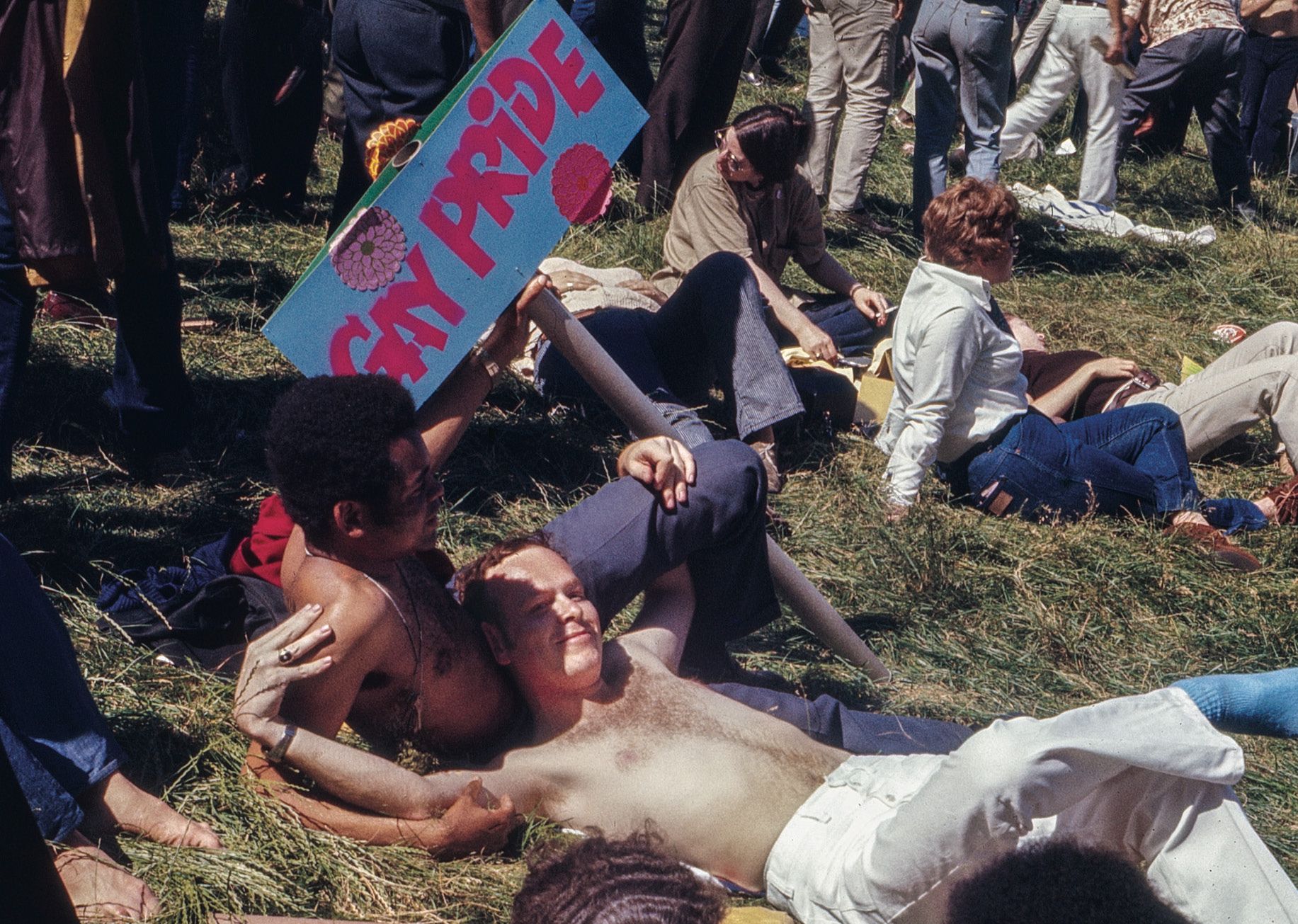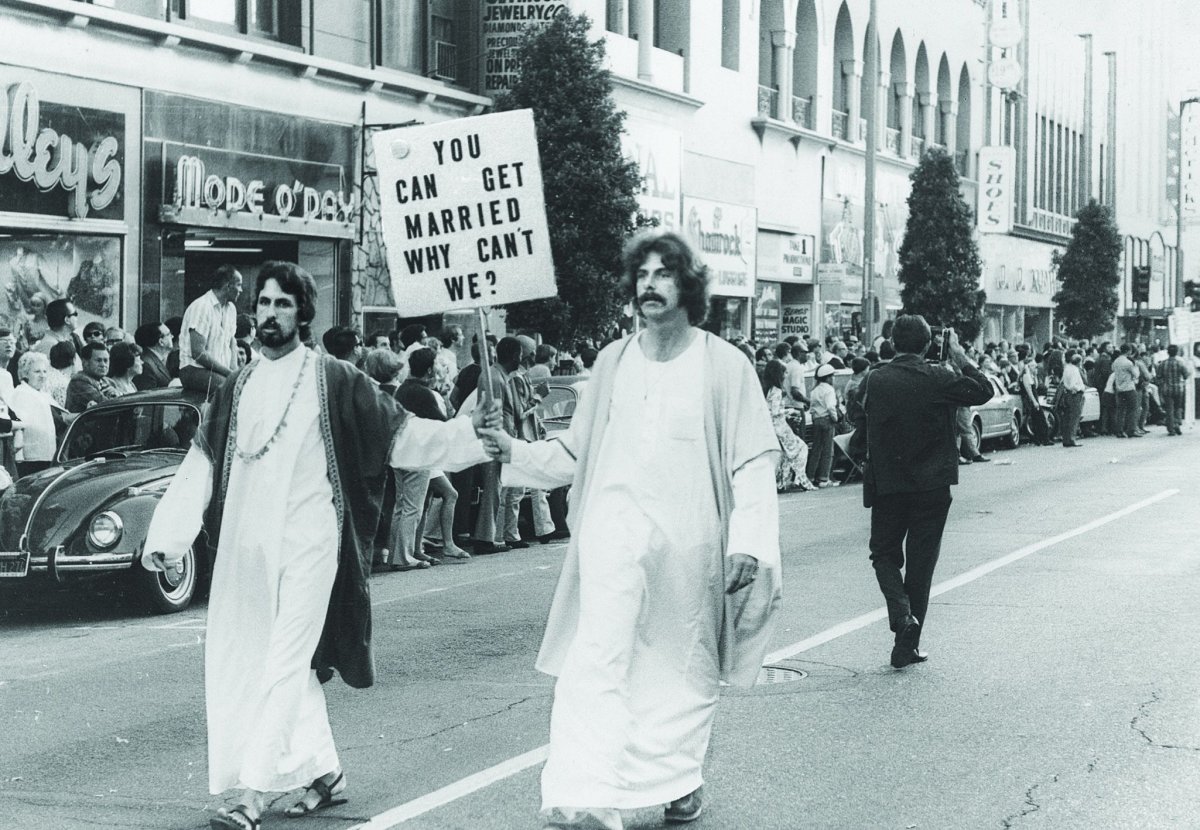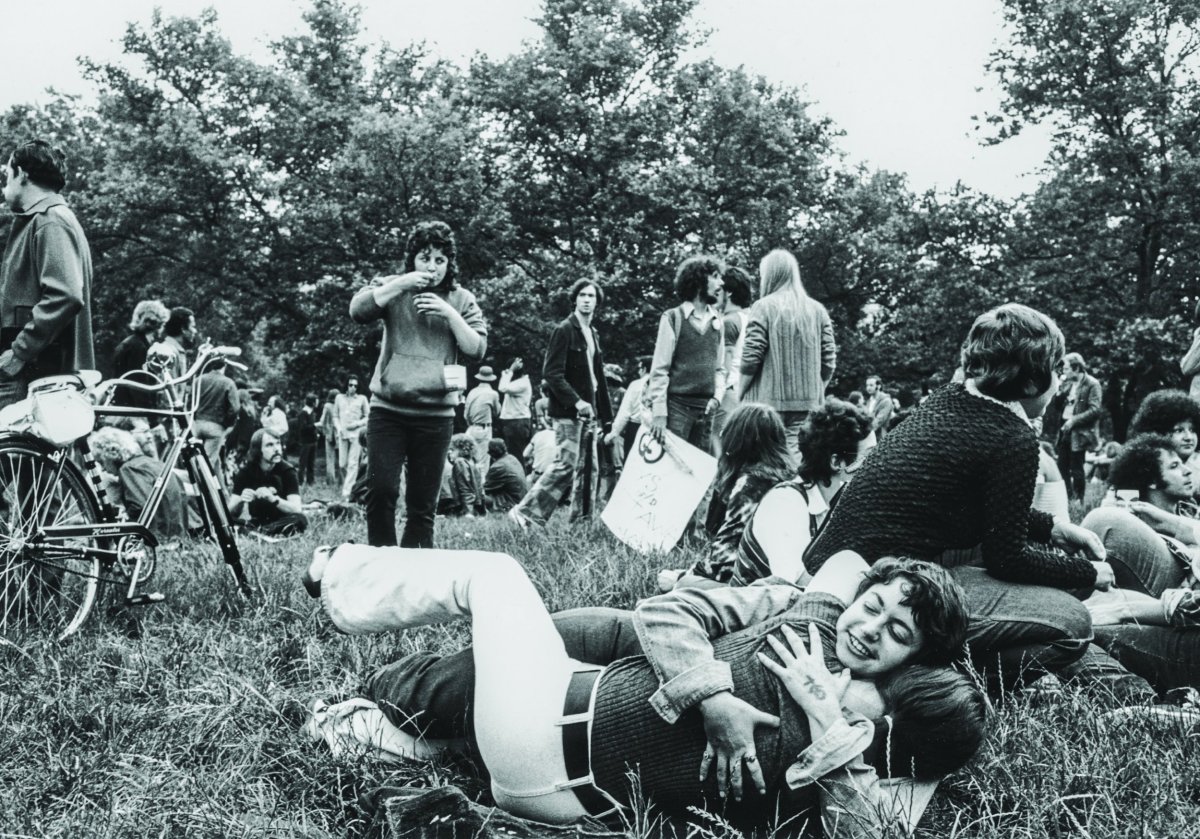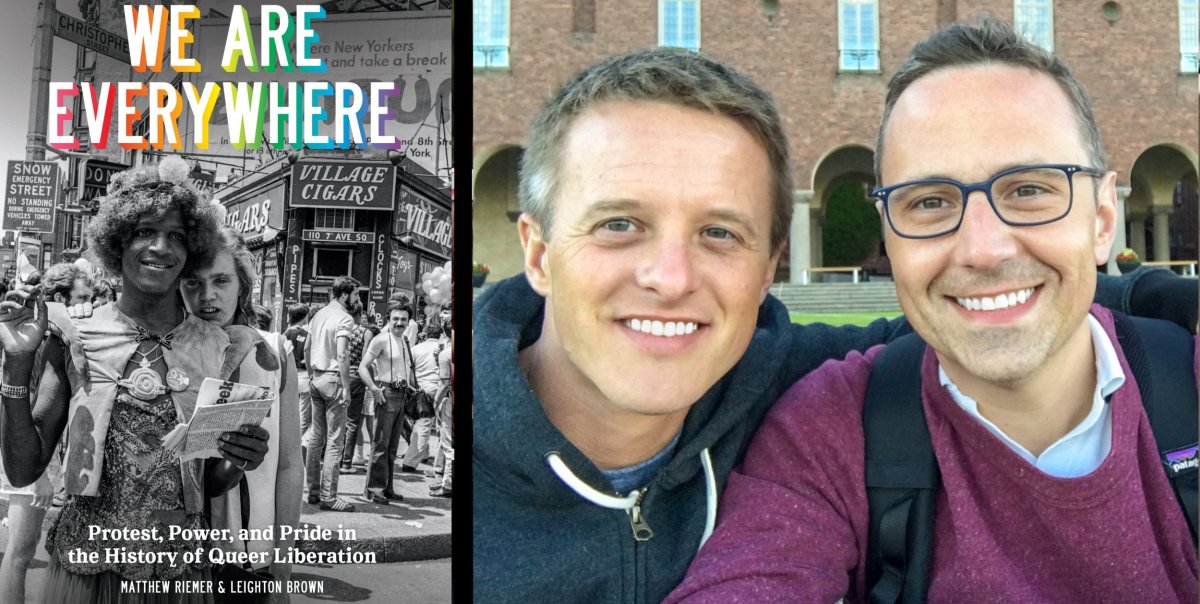
In We Are Everywhere: Protest, Power, and Pride in the History of Queer Liberation, Matthew Riemer and Leighton Brown, the creators and curators of the groundbreaking Instagram account @lgbt_history, combine exhaustive research with more than 300 meticulously curated photographs to offer a rich and sweeping photographic history of the LGBT rights movement.
In the excerpt below, they recount the first New York City Pride march, which then was called the Christopher Street Liberation Day March.
Craig Rodwell got to Sheridan Square early on June 28, 1970, not knowing what to expect with just hours before the first Christopher Street Liberation Day March. Of the ambitious Gay Pride Week events planned by Brenda Howard and the Christopher Street Liberation Day Committee, only Friday's dance at NYU's Weinstein Hall was well attended. With the march set to start at 2:00 p.m., it seemed as if the committee hadn't even been able to turn out a thousand people.
"There weren't many at first," but they came, "drifting out, massing out at the last moment as if they were watching to see if the others were going to show." At 2:10, the NYPD—there to protect the queers—insisted they get going. And so it began.
Following the lead banner—"CHRISTOPHER STREET GAY LIBERATION DAY 1970"—representatives from various groups, cities, schools, and all different walks of life stepped off the sidewalk and into the street: Gay Liberation Front, Gay Activists Alliance, Mattachine-NY, D.C. Mattachine, various chapters of the Daughters of Bilitis, Philadelphia's Homophile Action League, Lavender Menace, contingents from Boston and Baltimore, Lee Brewster's Queens Liberation Front, and students from Yale, Columbia, and Rutgers.

"The courage that it took for some people to make those first steps from Sheridan Square into Sixth Avenue and out of the Village," GLF member Perry Brass wrote, "was the summoning up of a whole lifetime's desire to finally come clear." At first, nerves propelled the crowd forward at a near jog; some later referred to the march as the "first run." But, one writer said, "we got more militant as we marched along. Today we owned the streets. We felt liberated and free."
Soon, a familiar shout cut through the air:
"Gimme a G!"
"G!" hundreds responded.
"Gimme an A!"
"A!"
"Gimme a Y!"
It was Sylvia Rivera, whose "voice was imperious, [her] expression selfless, then and as [she] cheer-led hoarsely along the sixty-block hike that was to end an hour later."
Sylvia cheered the whole way.
Moving uptown, it seemed every marcher saw a queer person they knew in the crowd on the sidewalks, not quite ready to take the step. "Come on out or I'll point you out!" someone yelled. And they did. "Tearing off the masks of anonymity," giving up the relative safety of the sidewalk, hundreds of people took "the first step in our liberation." And as more and more people joined, the pace slowed, the spirit lightened, and a sense of liberation connected thousands.

"In that March up Sixth Avenue," Frank Kameny said, "I was moved to a feeling of pride, exhilaration, and accomplishment, a feeling that this crowd of five thousand was a direct lineal descendant of our ten frightened people in front of the White House five years ago!" Among the brightly colored signs and banners was an inconspicuous placard reading "San Juan Pueblo." Although Harry Hay and his lover John Burnside had moved to an isolated area of New Mexico, he had managed to keep up with his Movement, arranging to be represented in his own, uncharacteristically subtle way.
By the time they reached Central Park, the lines of queer people stretched back twenty blocks, though few had any sense of just how big the crowd had gotten. Entering the park's Sheep Meadow area, marchers came to a rocky rise on the western end, turning around to look down on thousands of their "known and unknown friends." None of them—no one—had ever seen anything like it. People hugged, many cried, and spontaneous bursts of applause broke out; thousands of queer people were celebrating themselves and each other.
It was Gay Pride.

There was no program that afternoon, no agenda, no speakers; just a large group of gays dancing, chanting, kissing, relaxing, and occupying Central Park. It was "a family reunion, and the tattered carpeting of the park became a living room in which we all, under the beneficent sun, lived, touched, smiled and—not tolerated, but welcomed—one another's differences not as a lessening of our own particular selves, but as endless complements to that spark of self which is the sum of one soul."
For one afternoon, two lesbian writers noted, people experienced "the smiles of those unafraid of each other." But, they said, "you can only do it once."
The day ended, but the work had just begun.
Reprinted with permission from We Are Everywhere: Protest, Power, and Pride in the History of Queer Liberation by Matthew Riemer and Leighton Brown (Ten Speed Press, May 7, 2019).

Uncommon Knowledge
Newsweek is committed to challenging conventional wisdom and finding connections in the search for common ground.
Newsweek is committed to challenging conventional wisdom and finding connections in the search for common ground.





